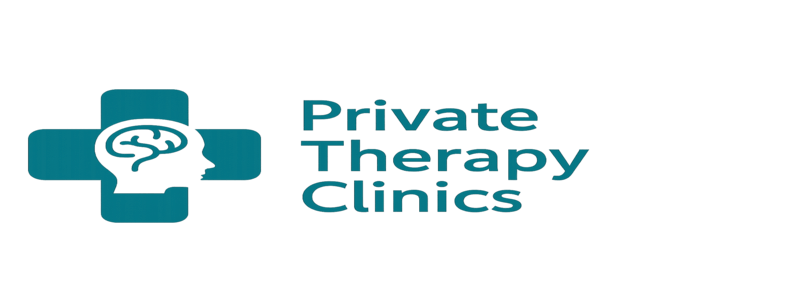
In 2025, therapy will no longer be a one-room experience but rather a more integrated system with clinics connected to community initiatives, apps that provide clinicians with insightful data, and prevention programs alongside crisis services. This means that mental health is measured not only by the lack of symptoms but also by the presence of capacity, which includes the ability to pursue goals, maintain relationships, and bounce back from stressful situations.
In addition to asking, “Are your panic attacks fewer?” clinicians now frequently set flourishing as an endpoint and ask, “Do you have reliable sources of meaning, and can you find calm when plans derail?” This change views positive affect and social functioning as valid clinical outcomes rather than optional extras, and it is partially motivated by longitudinal neuroscience and partially by cultural reframing.
| Label | Information |
|---|---|
| Topic | What It Means to Be Mentally Well in 2025: Therapy’s Expanding Definition of Health |
| Core thesis | Mental well in 2025 is defined by active flourishing—resilience, purpose, social embeddedness and functional capacity—so therapy now aims to cultivate strengths, not merely reduce symptoms. |
| Key components | Emotional regulation; psychological flexibility; social connection; meaningful activity; prevention and community supports; attention to social determinants. |
| Prominent methods | Cognitive Behavioral Therapy (CBT); Acceptance and Commitment Therapy (ACT); psychodynamic approaches; somatic methods; community-based models; teletherapy and precision psychiatry. |
| Systemic trends | Integrated care models, validated digital tools, prevention in schools and workplaces, culturally attuned practice, and policy shifts toward accessible mental infrastructure. |
| Trusted reference | World Health Organization — Mental health overview: https://www.who.int |
This shift is significant because resilience and purpose are not sentimental extravagances; rather, they modify stress biology in ways that are better understood and, thus, actionable in treatment planning. These changes include better sleep, a decrease in inflammatory markers, and a reduction in long-term morbidity.
Therapists blend more recent emphasis with tried-and-true modalities: Psychodynamic work traces relational scripts that frequently replay unconsciously, ACT offers a scaffold for values-guided living, CBT is still valued for its highly effective restructuring of unhelpful thoughts, and somatic methods restore bodily regulation after years of chronic activation. Taken together, these approaches create an integrated toolkit that is both practical and compassionate.
By treating technology like a swarm of bees, which are busy gathering data and bringing nectar back to the human hive without replacing the beekeeper’s judgment, digital platforms have evolved into trustworthy allies rather than just conveniences. Teletherapy has made continuity surprisingly affordable and geographically scalable, and validated apps provide daily mood, sleep, and activity signals.
Since pharmacogenomics and digital phenotyping assist clinicians in reducing the traditional trial-and-error of medication selection, precision psychiatry has emerged from promising trials into clinical conversation. This shortens the time it takes for patients to go from suffering to stability and significantly reduces months or years of ineffective prescribing for those who previously faced lengthy delays in receiving the proper treatment.
In response, integrated care models place social workers, legal advocates, and primary care within the same referral ecosystem so that therapy can address both symptoms and structural causes. This is important because the expanding definition of mental health explicitly includes social determinants: housing instability, food insecurity, and discrimination are now recognized as primary drivers of distress rather than just background noise.
Early intervention and prevention have finally gained a significant place on the agenda: workplaces provide resilience training and psychological-safety rituals, schools teach emotional literacy and co-regulation, and community peer supports normalize asking for help. These actions distribute resilience upstream, lessening the burden that would otherwise fall on acute services.
This change has been facilitated by public narratives. Cultural expectations are altered when CEOs, athletes, and actors openly discuss long-term therapeutic work, such as values realignment, grief processing, and boundary learning. Therapy is seen less as emergency triage and more as continuous professional development for the psyche, which is a form of maintenance that is especially helpful for high-pressure occupations.
However, this cultural diffusion has led to conflicts: the growing wellness industry frequently conflates marketing with evidence, and the spread of self-help apps can confuse users. In response, clinicians are pushing for standardized outcome metrics, validation studies, and coordinated platforms that steer users toward evidence-based tools instead of letting them navigate hype alone.
Cultural competency is now required; therapeutic approaches that disregard communal responsibilities, spiritual frameworks, or family stories perform poorly. Clinical efficacy is closely linked to social attunement, as evidenced by the significantly better engagement and results among diverse populations that therapists trained to work with cultural nuance exhibit.
Practice is starting to inform policy. Because mental health is both personal and political, the WHO’s recent directives emphasize multisectoral collaboration. Jurisdictions that integrate mental services into primary care and pledge community support report reduced emergency utilization, enhanced workforce retention, and quantifiable improvements in population well-being.
The economics are compelling: short-term, scalable preventative interventions, such as workplace check-ins, school-based social and emotional learning, and community peer networks, lower the prevalence of chronic illnesses and yield benefits like lower healthcare costs, higher productivity, and enhanced social cohesion, making mental infrastructure investment a definite public good.
The aggregate effect is demonstrated by anecdotes. One mid-career engineer I met referred to therapy as “recalibrating my compass.” Following an integrated program that included ACT, a medication review, and a weekly peer group, she reported feeling less reactive, having clearer priorities, and having a renewed sense of purpose. This resulted in lower absenteeism and an increase in creative problem-solving, demonstrating how therapy’s expanded scope benefits both individuals and the organization.
The idea that mental well-being is the presence of adaptive capacities rather than just the absence of disorder is supported by research that is catching up. Trials that incorporate metrics for positive affect, social functioning, and occupational engagement increasingly demonstrate that interventions aimed at flourishing produce sustained gains beyond symptom remission.
However, there are still pressing ethical issues to address, such as protecting data privacy for digital phenotyping, funding equitable access to high-quality digital and in-person services, and regulating the commodification of mental health care in subscription models to prevent the escalation of preexisting disparities. Sensible governance and public investment will determine whether benefits are distributed widely or concentrated.
The most encouraging indication for the future is pragmatic: minor, regular systemic changes, such as funding community peer networks, standardizing school curricula for emotional literacy, and integrating brief therapeutic check-ins into primary care, have a significant impact and demonstrate that the scaffolding for flourishing is more social than individual and remarkably economical when applied widely.
The emerging definition of mental well, if 2025 is interpreted as a pivotal year, is both optimistic and practical: it views biological stability, psychological adaptability, social embeddedness, and meaningful activity as interrelated aspects of health, and therapy’s job is to develop those abilities with accuracy, empathy, and systemic collaboration.
Therapy is taught, funded, and normalized, enabling people to live with complexity rather than just survive it. In this way, the broadening definition of health is both attainable and worthy of being the focal point of institutions. This reinterpretation encourages a civic approach to care.

